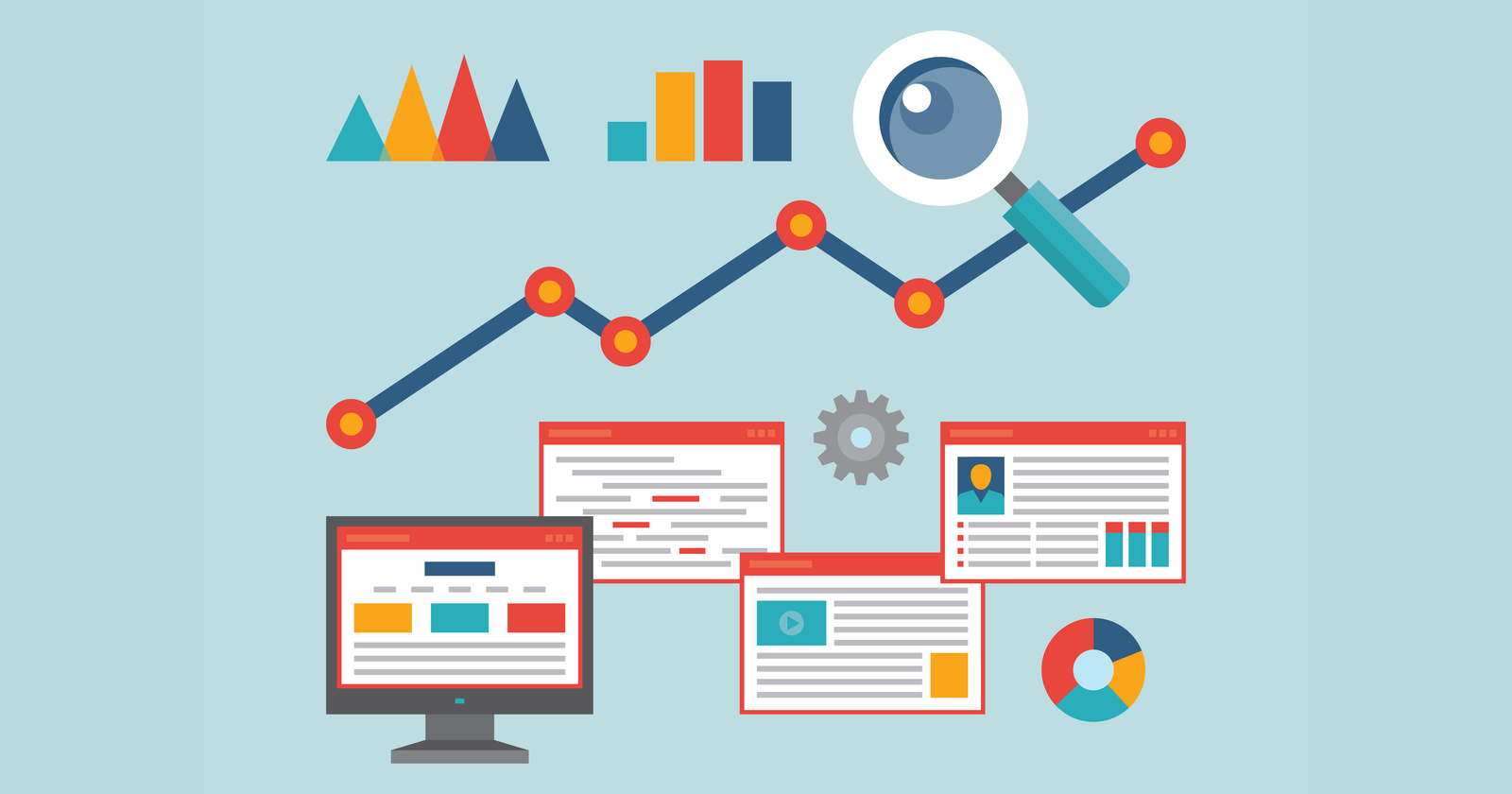The current worldwide pandemic is an unprecedented challenge in modern times, and the hardship it causes is still difficult to quantify.
For many commercial website operators, the worries are existential. The ongoing limitations on most people’s lives have a profound impact on customer behavior and thereby on the trajectory of entire industries.
They are at the same time causing increasingly bottled-up consumer demand that temporarily can’t be satisfied.
However, that will change in the months to come. With developing population vaccination initiatives, the prospect of a return to “life as we know it” starts to become real.
This opens up different avenues for website operators.
Their imminent decisions are bound to have lasting, long-term consequences for their website’s visibility in organic search results.
Whether their online sales are adversely or favorably affected by the current situation, website operators find themselves in a unique situation.
Here’s how to turn your unique set of circumstances into a lasting SEO advantage.
If your website is thriving, keep reading. However, if you are experiencing a substantial loss in organic traffic, feel free to jump to the ‘Falling Sales’ section.
SEO Tactics for Sustaining & Building on Growing Sales
Online retail, both business and entertainment streaming platforms, medical and healthcare portals, cargo, shipping, and storage providers are just a few examples of verticals experiencing an unexpected and ongoing boom in sales.
Frequently, shifting user needs correlate with an increase in demand which under normal, even most favorable circumstances could not be expected.
Website operators who happened to find themselves in this enviable position are well-advised to anticipate the next phase, when their user base may revert to their pre-COVID-19 habits.
The expected reduction in user demand does not have to translate into business decline, because there lies an opportunity in the now abundantly available data to carve out a larger market share for the future.
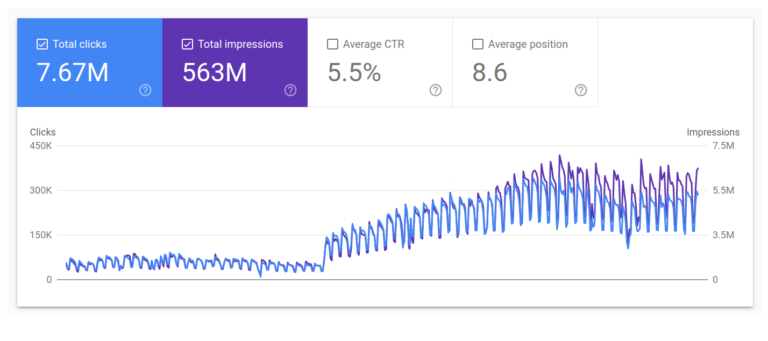 Some verticals and individual online services have benefited massively from the effects of the COVID-19 pandemic.
Some verticals and individual online services have benefited massively from the effects of the COVID-19 pandemic.
Record Server Logs
Ongoing server log data recording is critical to support this goal.
Raw server log data is generated when users or search engine bots request a page.
Complete, unprocessed raw web server logs covering an extended period of time can be analyzed and provide priceless insights into website performance.
Server log analysis can uncover spam content injected by a malicious third party. It can help to gauge incorrect server responses, such as soft 404, which if amassed, will cause organic ranking losses.
It also has the potential to identify spider traps and provide insights into crawl budget prioritization.
The latter point provides potentially critical information regarding re-crawl cycle timelines, which can be extensive, ranging from several months to more than a year.
Specialized server log analysis tools, such as Screaming Frog or Splunk, provide actionable results and are best applied as part of a technical SEO audit.
Of course, any compelling audit has to cover an exhaustive range of relevant SEO signals including backlink quality, canonicals, content signals, hreflang annotations, internal linking structure, mobile-friendliness, site speed, structured data, SERP representation, and XML sitemaps, as well as user experience.
Branding
A brand is not a ranking factor for search engines, yet branding does impact CTR and therefore is critical towards successful SEO.
High brand recognition when paired with ongoing, testing-driven snippet optimization results in higher than average CTRs.
This is why with sky-high exposure, there’s an opportunity to imprint the brand on users and therefore significantly increase the chance for users to demonstrate a preference for the brand when competing with others for attention in search engine result pages.
Google, in particular, shows preference in rankings to websites which (other factors being roughly equal) are most popular with users.
Expanding branding efforts, including social media outreach and advertising both on- and off-line as part of a long-term strategy for market-leading websites, is essential in order to improve SEO-relevant user signals.
In addition, the current pandemic crisis has had a negative effect on the advertising industry, temporarily lowering advertising campaign costs. This opportunity to grow brand recognition at a relatively lower cost is limited to this specific situation and bound to expire.
Performance
Similar to brand recognition impacting CTR, page performance is critical towards bounce rate as a user satisfaction factor.
In a nutshell, the more users return to search results looking for an alternative landing page to the one they just abandoned, the lower the rankings of that abandoned website.
Consequently, managing user expectations means delivering content to users as fast as possible.
Google Lighthouse stands out among performance testing tools as the most reliable. It provides and explains a number of KPIs including Largest Contentful Paint (ideally under 2.5s) and Time to Interactive (ideally under 4s).
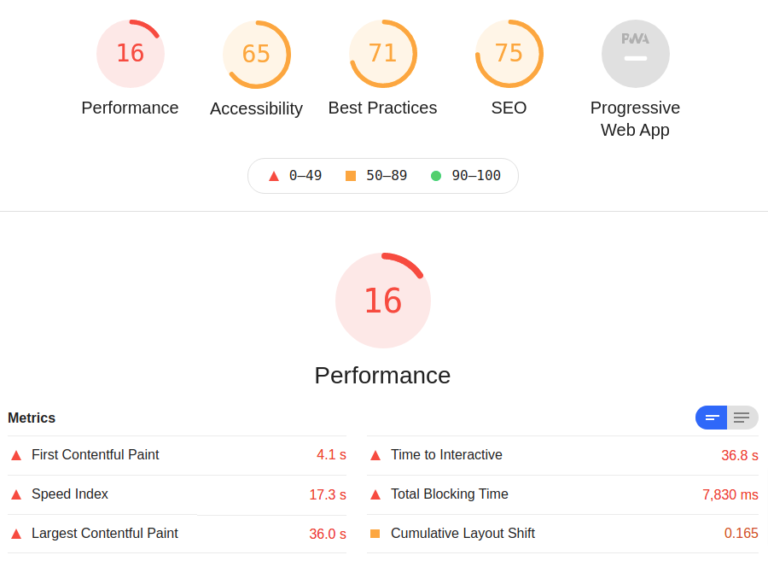
Google Lighthouse gives several critical SEO KPI metrics which determine rankings.
Site performance optimization can be complex, yet the overarching objective is simple: faster is better.
Here again, a technical SEO audit is advised to provide specific, actionable advice on performance improvement.
The hosting or cloud computing services used are one essential factor in providing a fast experience to users and maintaining a responsive service for frequent bot crawls.
In this regard, there are four superb service providers:
- Amazon’s AWS Hosting Service.
- Azure.
- DigitalOcean.
- And the likely unrivaled Google Cloud Platform.
Hosting a web service with a specific service provider does not directly boost rankings but it does help to ensure up-time, which is essential for crawling and landing page delivery to users.
Of course, the vicinity to Googlebot in the case of Google Cloud Platform is not a disadvantage, either.
Site performance must be considered in a larger context because of its critical importance for both crawling as well as a factor impacting user satisfaction signals.
Technology and or infrastructure changes tend to be costly and have lasting consequences if poorly handled.
Yet there’s the potential for market share gains when users’ expectations are met. This is why currently thriving website operators are well-positioned to use the torrents of relevant data and resources at their disposal to evolve their services into a better version and gain organic search visibility in the process.
SEO Tactics for Recovery from Falling Sales
For website operators suffering serious search visibility and consequently sales loss, the SEO call to action is imminent.
This includes industries such as travel, tourism, and subscription membership businesses.
Due to limitations currently imposed on consumers, many needs cannot be satisfied. In consequence, even for market leaders, organic search traffic has become anemic.
In the short run, this is obviously bad. However, from a long-term perspective, it’s an opportunity.
This is a one-off chance to revolutionize your online platform without any risk to anger users or lose existing clients.
Major initiatives such as domain and/or content migration, CMS change, transitioning to PWA or an entirely new tech stack, boosting page performance, scrubbing legacy backlink profiles, etc. are often tricky.
They rarely go entirely as planned and are frequently shelved for as long as possible in order to avoid the inherent risks.
Yet with no traffic and conversions to speak of right now, the risk is rather an opportunity in disguise.
This is the right time to prepare for the inevitable post-COVID-19 spending frenzy.
Website operators who plan long term and survive market consolidation will be confronted with fewer competitors.
There is little doubt that the initial consumer run will exceed any past record-breaking sales.
If your website rankings are in a slump due to COVID-19, you truly are in the winning position (even though it doesn’t feel like it right now).
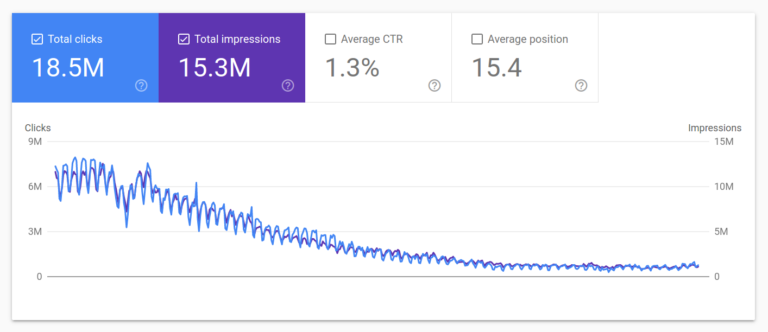 The COVID-19 pandemic has led to a tremendous decline in organic traffic for some verticals.
The COVID-19 pandemic has led to a tremendous decline in organic traffic for some verticals.
Technical Audit
Any website operator is well-advised to embrace all of the points raised above previously.
However, anyone with little in terms of organic traffic to lose at the moment must do one thing above all: conduct a data-driven SEO audit, preferably including server log analysis, provided that server logs have been recorded and preserved in the recent past.
The objective is to identify any and all website shortcomings including all structural, technical, and content issues, but also including off-page signals, especially regarding possible legacy backlinks lingering and holding rankings down.
And last but not least, the audit should look into any challenges stemming from poor Google Webmaster Guidelines compliance.
Because of the low volume of organic traffic, chances are that even large websites can be crawled at an expedited rate without causing any user experience harm.
House Cleaning
Prioritizing and actualizing the findings of a technical SEO audit are the next steps, in order to identify the most promising or challenging areas and decide upon the best course of action.
While solutions such as workarounds are preferred for addressing individual legacy problems, in this instance it is better to embrace radical new solutions, especially on a technical level.
That also includes removing or moving bits and pieces of the website which came into existence at some point in time but that do not help to make the website better for the main target audience — the customers.
The following examples outline how new TLDs can be used to move tutorials, user generated, press and media, user generated, lean or otherwise no-longer-desirable content to a new location:
example.com/blog/ -> example.blog
example.com/events/ -> example.events
example.com/forum/ -> example.forum
example.com/images/ -> example.gallery
example.com/jobs/ -> example.careers
example.com/pr/ -> example.press
example.com/shareholders/ -> example.investments
example.com/shopping/ -> example.shop
example.com/support/ -> example.support
example.com/tickets/ -> example.tickets
example.com/tutorials/ -> example.guide
These examples are not exhaustive.
They demonstrate that content that does not help a website to rank better, despite having some limited use that prevents it from being deleted, is best moved off the main domain.
Which parts of a website warrant moving is determined as part of the SEO audit and content review process.
The objective here is to reduce diluting content signals and preserve ideally only desirable, optimized landing pages.
Cleansing SEO signals of legacy issues include next to on-page technical and content signals as well as off-page signals, especially with regard to backlink quality.
Backlink profiles rarely undergo the same level of ongoing scrutiny, even though they have the potential to profoundly and lasting impact rankings.
Backlink analysis and clean-up are time and resource-consuming. Yet they are a necessary step towards Google Webmaster Guidelines compliance and a stepping stone towards improved rankings.
This is why a thorough backlink audit followed by uploading a compelling disavow file is in order, as part of the clean-up initiative.
Unique Selling Proposition
In the next step, the core of landing pages meant to perform well in organic search must be optimized with the single objective to demonstrate a unique selling proposition.
The term, widely accepted in the offline retail business, has not yet truly taken root in the online marketing industry.
The foundation of the principle rests on the fact that a website won’t rank long term unless it provides, in some way, a more compelling service than its competitors.
That unique selling proposition (USP) can include one or several elements such as ease of use, fast service, unbeatable reliability, wide product selection, or the largest community of fellow enthusiasts.
While the USP is part of the business model of any commercial venture, in the online world it must be communicated to the user at the point of first interaction — that is, through optimized SERP snippets.
Appealing snippets directly impact CTR which will be a more critical SEO signal than previously for websites that are bound to benefit from exceedingly large volumes of post-COVID-19 organic traffic.
In a nutshell, websites with optimized snippets that manage user expectations well are certain to exceed, not merely regain previous Google visibility.
That is, if they can demonstrate living up to user expectations.
Short of in-depth analysis, any website operator can glimpse an insight into how well their snippets perform when reviewing their GSC Performance report and while taking the impact COVID-19 has had on the data since early 2020.
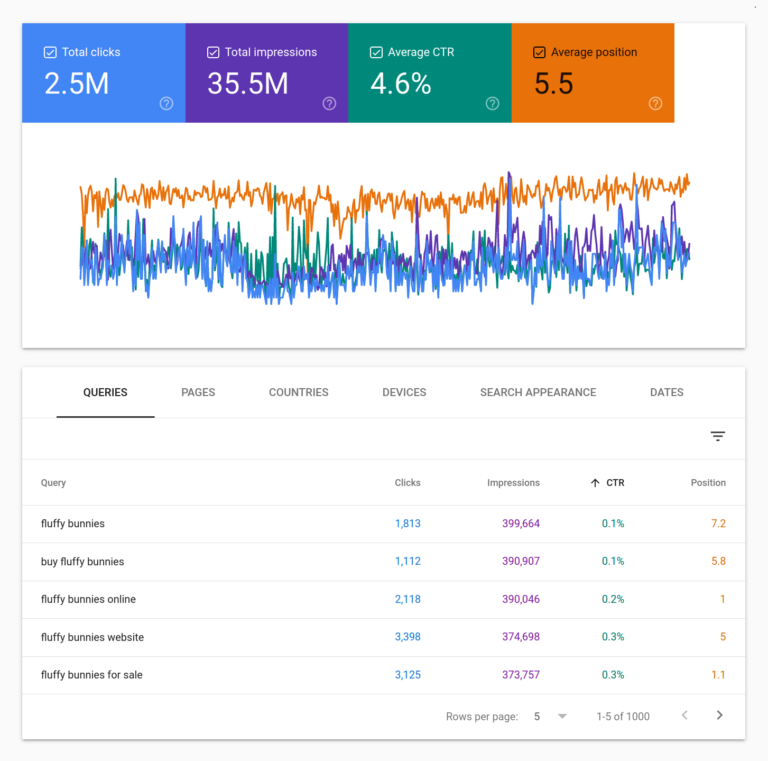 High impressions next to low CTR % indicates poor snippets and therefore the potential for growth.
High impressions next to low CTR % indicates poor snippets and therefore the potential for growth.
Managing User Expectations well, including providing a unique selling proposition, goes a long way towards establishing superior organic rankings based on user satisfaction.
There’s a reason why Google tends to show preference even for the most competitive commercial queries towards websites that are popular with users. This is consistent with their objective to keep Google user satisfaction consistently high.
That strategy rests at the core of the Google business model and can be exploited for the benefit of Google, website operators, and users alike.
Time to Act
Whether confronted with rapidly falling or skyrocketing search engine visibility, the COVID-19 pandemic represents in strictly commercial terms an industry disruption and ultimately a chance.
Once it has passed, market shares will be relinquished or gained, depending on how the opportunity is handled.
Winning sites can afford to use it as a springboard and utilize the opportunity to organically evolve into substantially improved versions.
Losing websites must use it as a chance to reinvent their platforms, or abandon the hope of becoming a major force in their online niche.
For a few — those who dare to take initiative and commit to undertaking radical steps — the current situation will ultimately translate into lasting online success.
More Resources:
- SEO Strategy vs. Tactics: What’s the Difference? A Lot!
- 101 Quick & Actionable Tips to Improve Your SEO
- A Complete Guide to SEO: What You Need to Know
Image Credits
All screenshots taken by author, March 2021

